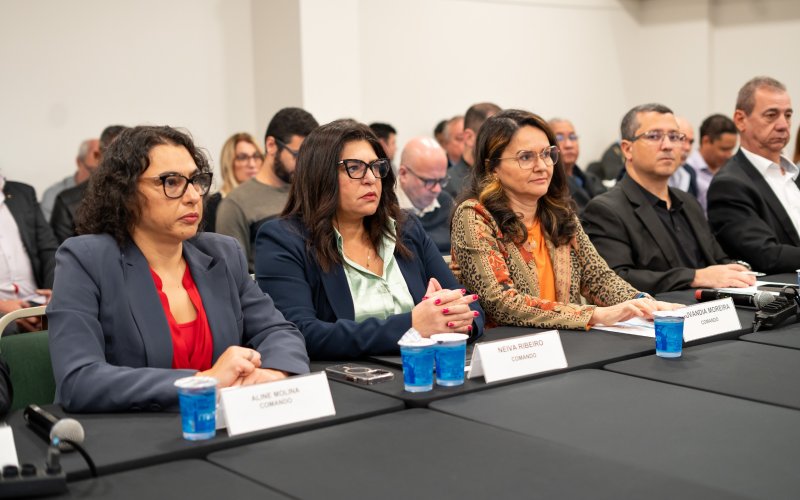
Change does not come without resistance. It is natural for humans to seek comfort in what is already known. Therefore, the moments when one has the courage to do things differently should be celebrated, especially in the field of public administration, which is the reason for this column: to announce the good audacity by the State Secretariat for Infrastructure and Works. Rio de Janeiro (@SEINFRA).
SEINFRA has pioneered, through the State Institute of Engineering and Architecture (IEEA), the implementation of the BIM methodology, “Building Information Modeling” in the state of Rio de Janeiro. The BIM methodology, translated into Portuguese, includes processes, tools, people and policies from project creation to inspection and handover of the foundation. In the public sector, BIM provides greater speed, economy, and transparency by standardizing the entire public works management process in a collaborative environment, enabling better identification of deadlines, costs, and projects in a preventive manner, thus significantly reducing mismanagement and application of public investments in infrastructure.
Although BIM is not an innovation in the private or public infrastructure sector, since in some countries such as the UK it is already a mandatory modeling for any and all public procurement, its adoption in the General Directorate of Infrastructure Projects in Brazil is really a great step towards A true national revolution in the sector, including the private sector, as the impact of the initial actions spearheaded by the Secretariat for Infrastructure has already shown.
In addition to the potential for a related contribution to reducing project errors and unplanned expenditure of public funds through scope and duration adjustments to public contracts, preparing projects within the BIM methodology contributes directly to the efficiency of public agencies. This is because the design within an environment and program compatible with the methodology, allows the budget preparation process to be shortened in up to half the time.
In addition, the creation, even by the contracting companies, of a virtual library, which, by integrating the assets of the contracting body, allows the possibility of replicating projects with rapid adaptation to local realities. This means that contracting for the design and operation of a public school reduces the initial phase of contracting for other buildings of similar size by up to 40%.
And that’s not all, the computerized and visualized system in the dimensions of BIM modeling for projection, budgeting, inspection and control, produces a feedback effect that gradually improves the general business management process so that, when the ownership of the management of a particular public body changes, which is natural due to elections, it will be The new leader has, in a simple way, a diagnosis and outlook for the undertakings under way. It seems to be a simple measure, but the truth is that, in addition to overpricing businesses and reducing their dimensions, stopping them due to administrative changes is one of the problems that negatively affects the general budget today. It may seem insignificant, but no innovative, computerized and visually clear solution has been made available to the common people of public administration till today.
Since the launch of the BIM / BR strategy through Federal Decree No. 9.983 / 2019, the first step to start this revolution at the state level was to take over the institutional capabilities of SEINFRA, as well as the degree of its technical and administrative maturity, which revealed the need for academic cooperation and partnership to provide knowledge transfer for better management Infrastructure projects with the transfer of BIM technology in the country. Thus, with the State Institute of Engineering and Architecture as agent and PUC-Rio as partner, what was informally called the “InfraCities Project” was born, with the scope of implementation of a real public policy of innovation. This has already made such an impact that private companies and other countries have already come to our region Workshops To understand project guidelines.
This is a disruptive policy, because once it is fully implemented, there is no turning back. This means that when there is a public housing project, that project will be kept in a library and can be replicated on as many other projects as you like. Time, money and work will be saved and improved in an unprecedented way, in addition to inspection work that will gain more transparency. These gains are not limited to the field of the authority that leads these transformations, but also reach the oversight bodies, such as auditors, courts of accounts and the Public Prosecution, for which data and evidence will be provided in the system in a clear, contemporary and consistent manner.
With the plans shown even in 6D and showing all the areas, materials used and the construction life cycle at once, it will be very clear to those who are not engineers or architects to understand the importance of having everything that is required. way to do it. The likely outcome of this new system could not only be a massive reduction in the number of interventions (and work stoppages) often determined by these bodies because they did not have contemporaneous or clear access to relevant information while executing contracts, but also a real feasibility. Direct social control over public policies in this sector.
The project is progressing and overcoming each stage incrementally. It is necessary to take into account that not everything is flowers. Project collaborators encounter problems all the time. But it is precisely what feeds us, it is the impasses that feed the laboratory and demand joint solutions among a prepared technical team, this is research, it is learning, it is the legacy of public administration, it is the real interaction between administration, society, academia and private initiative. The important thing at the moment is constancy, especially in light of the changes promoted by the new law of giving, which in its art. 19, Paragraph 3 already stipulates the preference for adopting BIM modeling for infrastructure projects. Daring to invest, develop and integrate this new knowledge is not omnipotence, it is a duty, and neglecting this reality will be very costly for Brazilian society, which will remain steadfast amid the innovations already incorporated by other countries.
It never hurts to congratulate the courage and intelligence of managers who turn public administration into a place of innovation, especially in times of exacerbation of punishment. The time is not far off when any citizen will be able to easily supervise every action of the state, and the term accountability will have a real, concrete and understandable meaning that goes beyond the technical and legal body. As a participant in the process of active and disruptive transformation, I would say that the call for the dissemination and adoption of the BIM methodology and its potential for public administration in general was one of the best surprises I have had in my professional journey.
* Yasmine Castro is a lawyer and procurement coordinator for the Infracidades project from Sinfra

“Friendly zombie guru. Avid pop culture scholar. Freelance travel geek. Wannabe troublemaker. Coffee specialist.”







